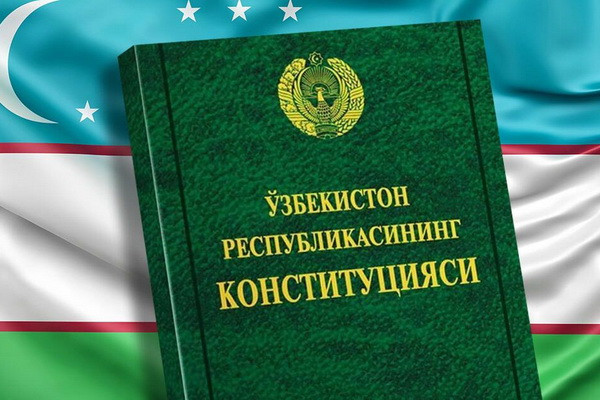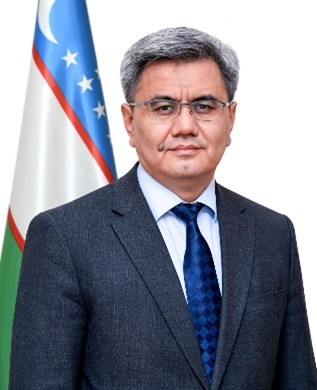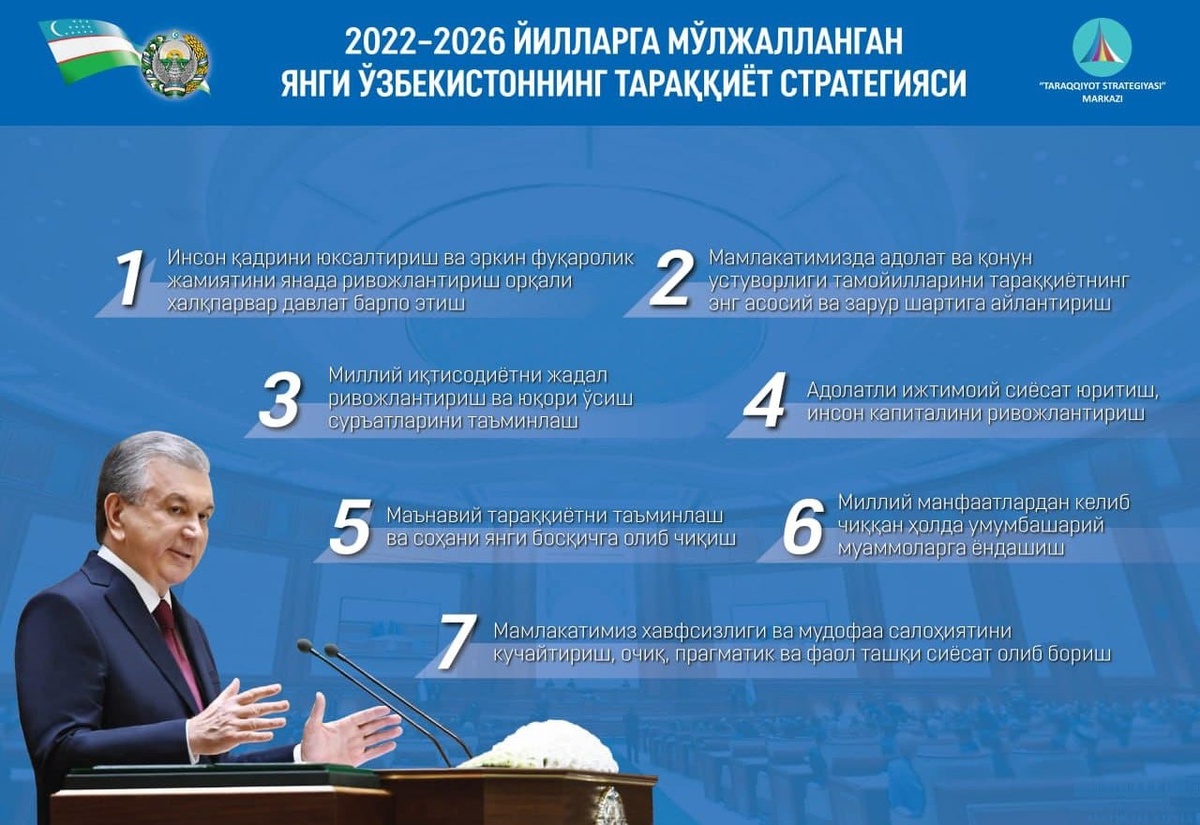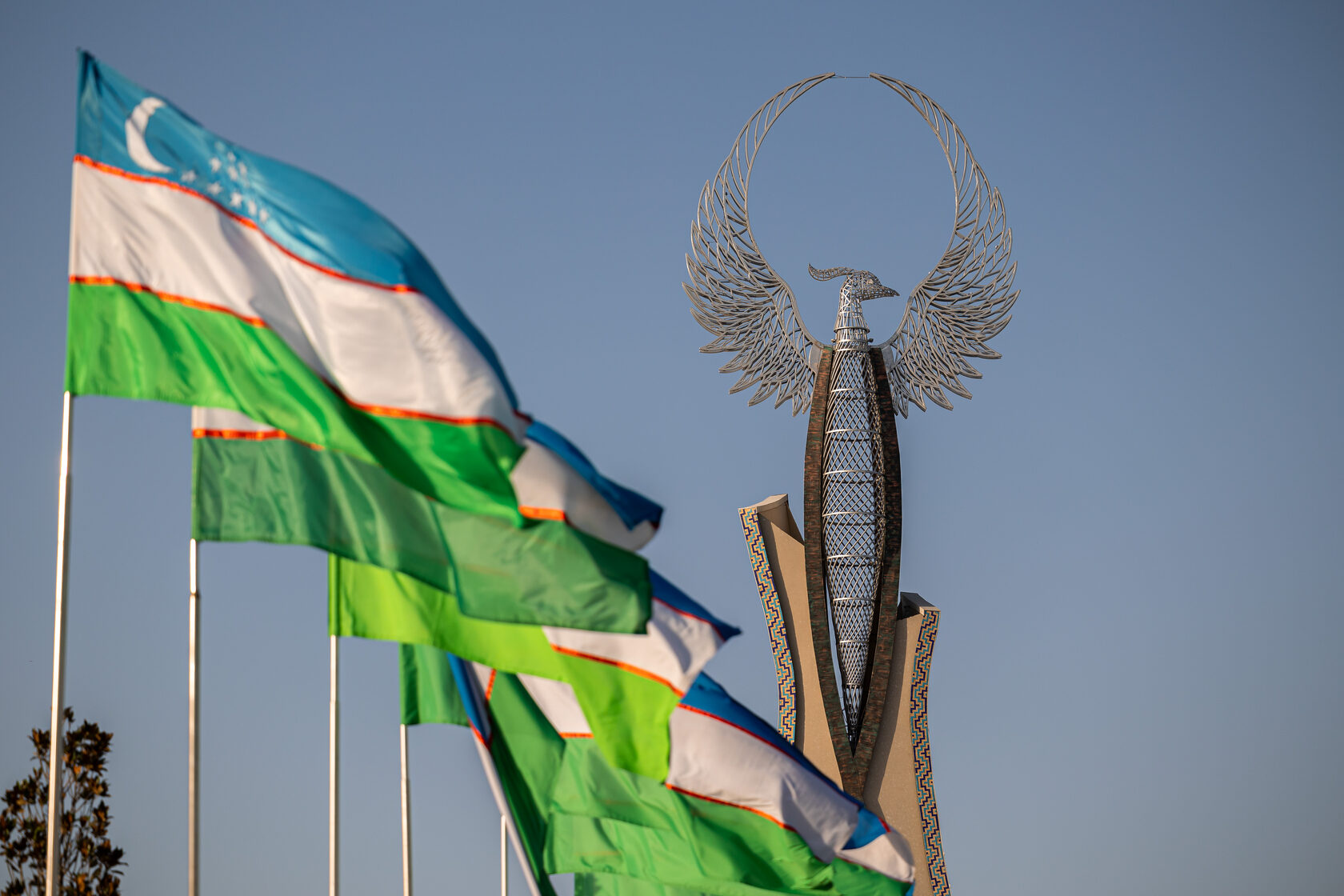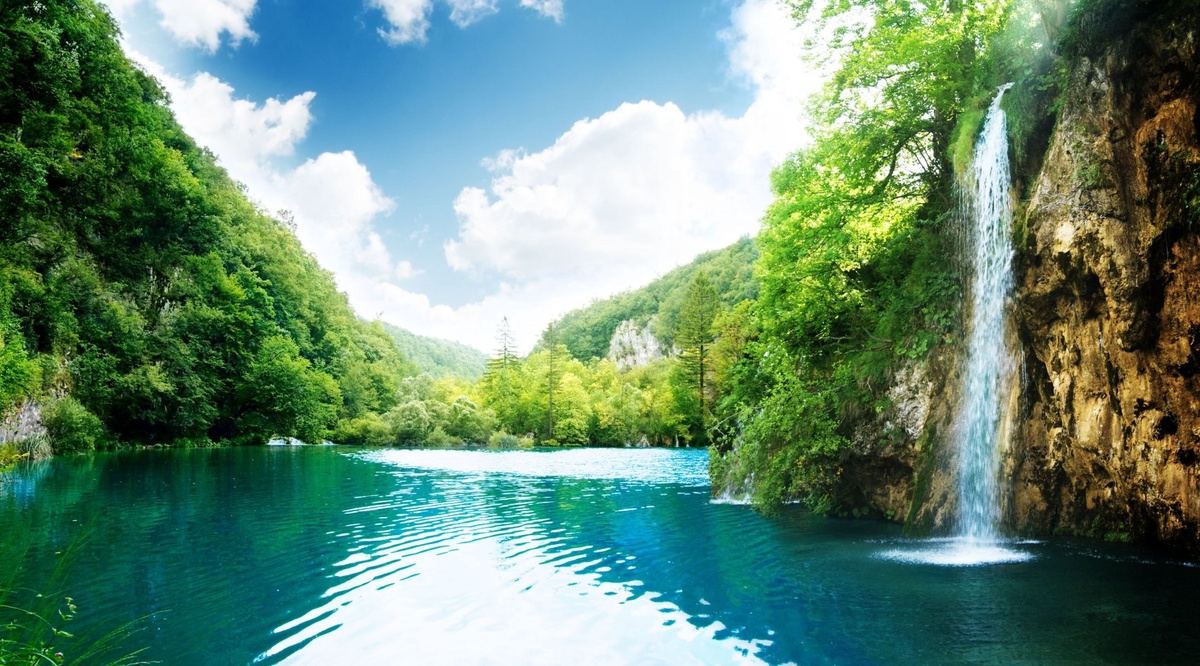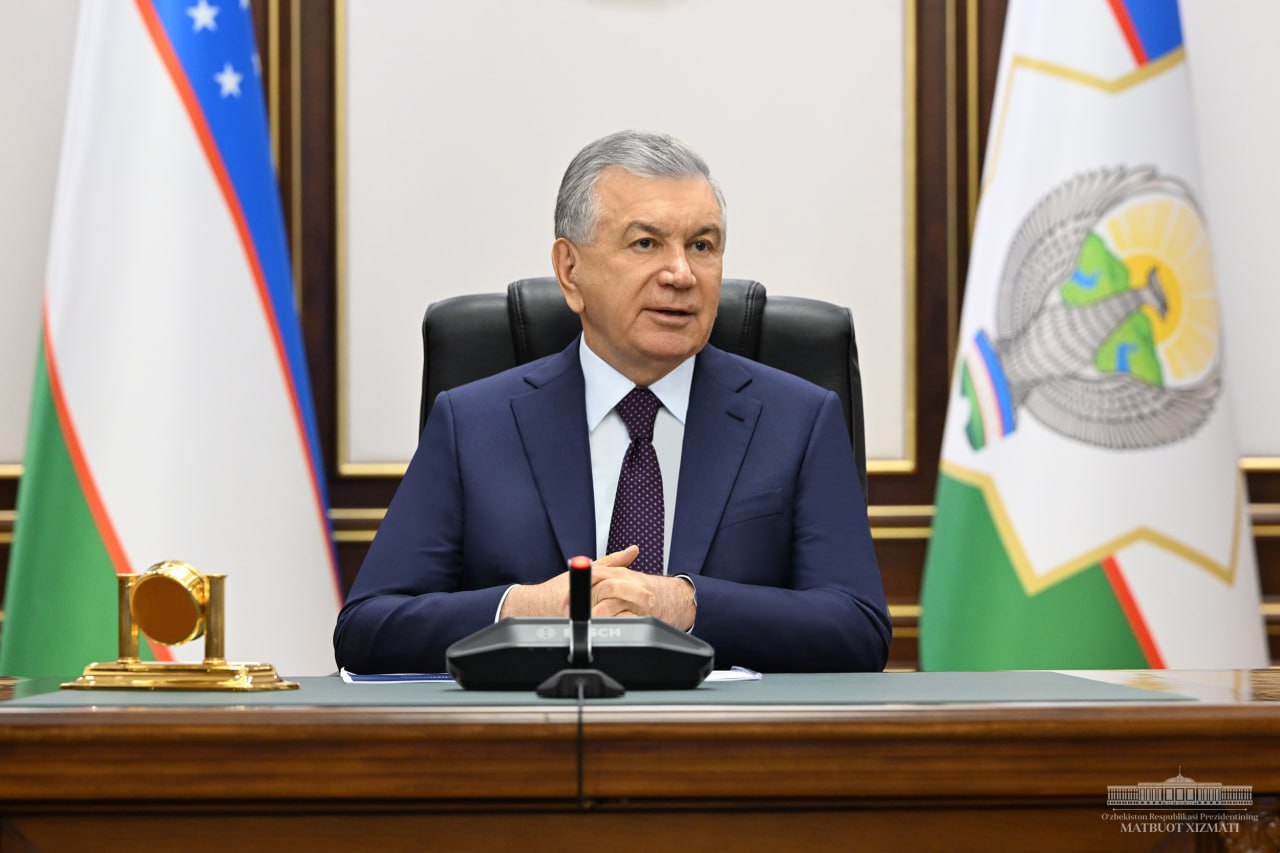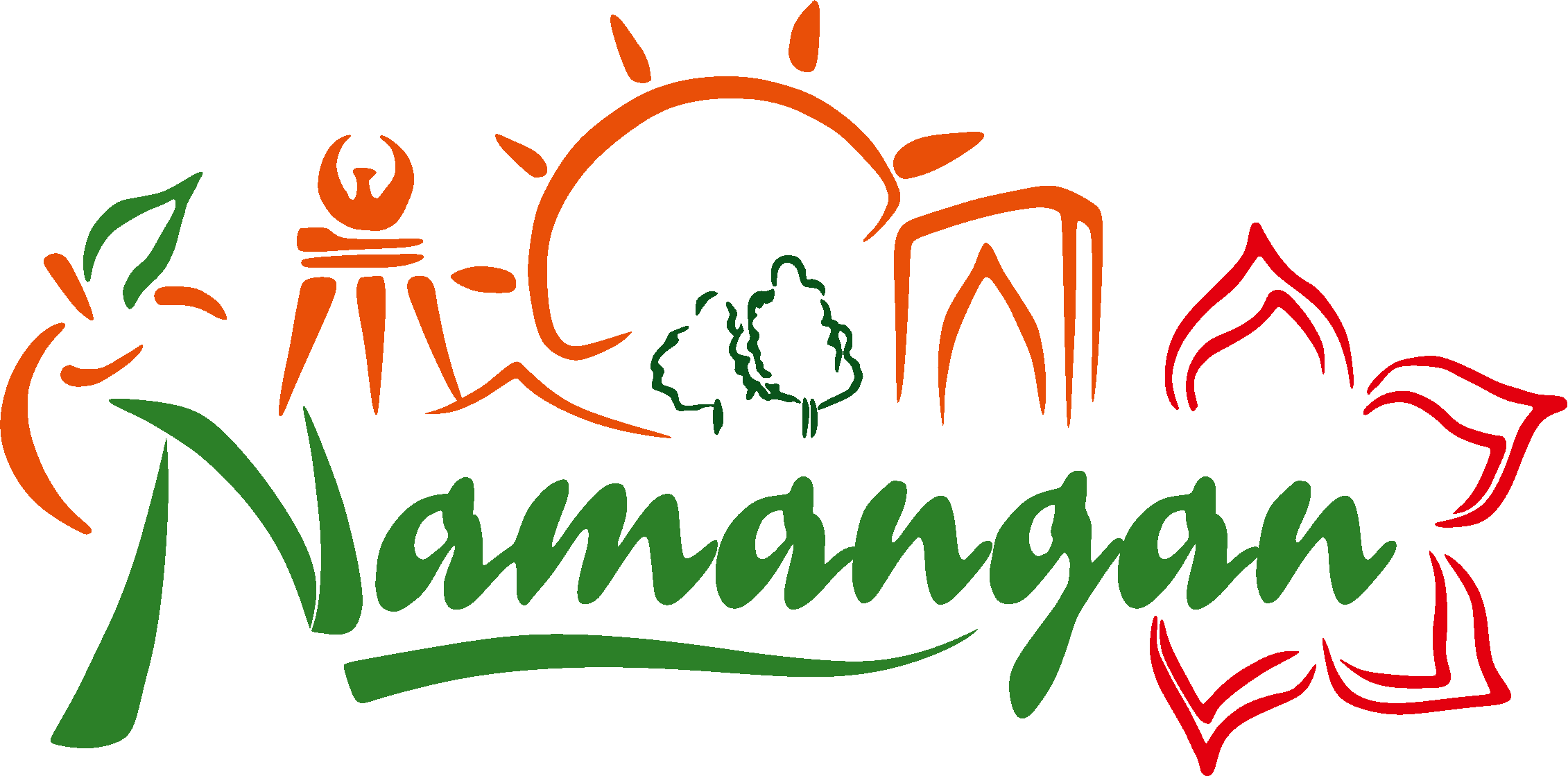Узбекистан и страны Балтии объединяют усилия в борьбе с коррупцией
15.07.2025РИГА, 15 июля. /ИА «Дунё»/. Делегация Узбекистана во главе с директором Агентства по противодействию коррупции Акмалом Бурхановым посетила Латвию и Литву с целью укрепления двусторонних связей и определения новых перспективных направлений сотрудничества в сфере борьбы с коррупцией, сообщает корреспондент ИА «Дунё».
В рамках визита состоялись двусторонние встречи с директором “Transparency International Latvia” Кристой Асмусой и заместителем руководителя Бюро по предотвращению и борьбе с коррупцией Латвии Янисом Розе. В ходе встреч стороны выразили обоюдную заинтересованность в продолжении эффективного сотрудничества и расширении масштабов реализуемых совместных проектов.
В частности, на встрече с директором “Transparency International Latvia” обсуждались вопросы разработки эффективных стратегий противодействия коррупции, улучшения позиций Узбекистана в Индексе восприятия коррупции, обеспечения открытости и прозрачности государственных органов в этой сфере, а также повышения потенциала институтов гражданского общества.
На встрече с заместителем руководителя Бюро по предотвращению и борьбе с коррупцией Латвии состоялся обмен опытом по вопросам антикоррупционной экспертизы нормативно-правовых актов и их проектов, а также крупных строительных проектов. Стороны также обсудили практику оценки коррупционных рисков и мониторинга процессов государственных закупок.
Важно отметить, что Агентство по противодействию коррупции Узбекистана и Бюро по предотвращению и борьбе с коррупцией Латвии в 2022 году подписали Меморандум о взаимопонимании. В рамках этого документа осуществляется сотрудничество в сферах укрепления двусторонних связей в борьбе с коррупцией, обмена передовым опытом и информацией, повышения квалификации кадров, а также организации учебных мероприятий, семинаров и тренингов по вопросам профилактики коррупции.
В ходе встречи с директором Службы специальных расследований Литвы Линасом Пернавасом была подчеркнута значимость проводимых в Узбекистане реформ и роль международного сотрудничества в сфере противодействия коррупции. Стороны также отметили важность обмена опытом с Литвой для его адаптации и применения в национальной практике.
На встрече были обсуждены вопросы двустороннего сотрудничества в области профилактики коррупции, оценки коррупционных рисков и повышения квалификации кадров.
По итогам встречи был подписан Меморандум о взаимопонимании между Агентством по противодействию коррупции Узбекистана и Службой специальных расследований Литвы, создающий основу для дальнейшего развития сотрудничества в борьбе с коррупцией.
Подписание Меморандума стало важным шагом к укреплению международного сотрудничества Узбекистана в сфере противодействия коррупции. Ожидается, что реализация положений Меморандума будет способствовать обмену опытом, внедрению передовых практик и, как следствие, повышению эффективности антикоррупционных мер и улучшению позиций Узбекистана в международных рейтингах.
The Constitution — The bedrock of Uzbekistan’s trust, stability, and future
24.11.20258 December marks Constitution Day in the Republic of Uzbekistan - a date that holds a distinct place in the nation’s modern history. Adopted in 1992, the Constitution laid the foundational pillars of the country’s independence, the rule of law, and its democratic evolution. It set the trajectory for the emergence of a young sovereign state, defined the core principles of its governance, and charted the path toward building an open, peaceful, and humanistic society.
The Constitution emerged as the decisive document that established the normative framework for shaping a sovereign Uzbekistan. It enshrined the political, economic, and social model of the future state — a model rooted in democratic principles, the rule of law, respect for human rights, and the freedoms of the individual.
The adoption of the Constitution marked a pivotal step in the institutionalization of Uzbekistan’s independence, laying a solid legal foundation for all subsequent political and socio-economic reforms.
On 8 December 1992, the Constitution was formally adopted during a session of the Supreme Council of the Republic of Uzbekistan, thereby acquiring the status of the Fundamental Law of the newly independent state.
The dynamic evolution of society, the growing expectations of citizens, and the need to introduce modern democratic standards created the prerequisites for a profound renewal of the Constitution. The new stage of national development — widely referred to as the period of shaping the New Uzbekistan — called for a substantial expansion of political, social, and legal guarantees. It was within this context that a far-reaching constitutional reform was carried out in 2023, marking a genuine milestone in the country’s history.
The drafting of the new edition of the Constitution also unfolded through an extensive process of public consultation. More than 222,000 proposals were submitted by citizens — an unprecedented level of civic engagement. Specially established commissions and expert groups thoroughly reviewed these public initiatives, incorporating the most relevant and widely supported ideas into the updated text. This process became clear evidence that Uzbekistan’s Constitution is genuinely a people’s Constitution — a document shaped through the direct participation of society itself.
The referendum held on 30 April 2023, in which millions of citizens took part, served as the ultimate confirmation of the people’s collective choice and will. A large-scale international observation mission—comprising representatives of major international organizations as well as national and foreign civil society institutions—ensured a high degree of transparency and legitimacy throughout the process. Following the vote, the new edition of the Constitution was endorsed by an overwhelming majority of participants and entered into force on 1 May 2023.
The updated Constitution represents a major stride toward the further democratization of the country. It enshrined fundamentally new approaches to governance and human rights, expanded social protections, and strengthened mechanisms for safeguarding individual freedoms. The number of articles increased from 128 to 155, the number of chapters from 26 to 27, and the total number of provisions from 275 to 434. In effect, more than 65 percent of the Constitution was renewed, underscoring the depth and scope of the reforms undertaken.
One of the most significant achievements of the reform was the formal recognition of Uzbekistan as a social state. The Constitution now reflects a new generation of social commitments: ensuring access to affordable housing, guaranteeing a minimum wage that provides a decent standard of living, strengthening social support for the most vulnerable groups of the population, and improving the quality of medical care. These provisions embody a modern understanding of justice, equal opportunities, and human dignity.
The updated Constitution significantly strengthens guarantees for human rights and freedoms. It introduces provisions prohibiting forced labor, abolishing the death penalty, protecting citizens from arbitrary detention, and limiting pre-trial detention without a court decision to no more than 48 hours. Mechanisms ensuring judicial independence have been reinforced, and requirements for the accountability of state bodies and officials have been increased. These reforms are crucial for reinforcing the rule of law and safeguarding the legal protections of citizens.
The 2023 Constitution also reflects significant developments in the sphere of international relations. For the first time, the constitutional framework established new institutional foundations for Uzbekistan’s foreign policy, aligning with the course of the New Uzbekistan toward openness to the world, the strengthening of good-neighborly relations, and active participation in global processes. It affirms that international treaties take precedence over domestic legislation, enhancing Uzbekistan’s integration into the global legal space and ensuring that national laws comply with international standards. The Constitution also guarantees a ban on the extradition of Uzbek citizens, further reinforcing the protection of their rights abroad.
The foreign policy principles enshrined in the new edition also reflect the country’s commitment to strengthening regional stability, developing mutually beneficial relations with partners, expanding economic diplomacy, and actively engaging in addressing global challenges. These provisions demonstrate that the foreign policy of the New Uzbekistan now rests on a solid institutional foundation, contributing to the enhancement of the country’s international standing.
Today, Uzbekistan is confidently advancing along the path of modernization, improving governance, strengthening rights and freedoms, and creating conditions for human development and economic growth. The updated Constitution underpins this trajectory, serving as a key reference point for both the state and society. Each citizen, guided by the Fundamental Law, reinforces their confidence in the future, in justice, and in the sustainable development of their homeland.Uzbekistan in the “C5+1” Platform: Strengthening the Strategic Dialogue with the United States and Central Asian Countries
10.11.2025Modern Central Asia is becoming a space of sustainable growth and mutual trust. The countries of the region demonstrate a strong commitment to building balanced relations with global partners, prioritizing practical initiatives in trade, energy, transport, and innovation. One of the key formats shaping this new architecture is the “C5+1” platform, which unites the Central Asian states and the United States.
Regional Consolidation: Dialogue Based on Equality and Pragmatism
In recent years, the “C5+1” format has evolved from a diplomatic mechanism into an effective platform for coordination and implementation of joint projects. The latest ministerial meeting in Samarkand, attended by the Minister of Investment, Industry and Trade of the Republic of Uzbekistan, Laziz Kudratov, demonstrated a high level of trust and a shared focus on tangible results.
Key topics on the Samarkand agenda included food security, climate resilience, development of green and digital economies, diversification of transport corridors, and deepening industrial cooperation.
Following the meeting, memorandums were signed on decarbonization and digitalization of customs procedures - a step that paves the way for harmonized trade rules, easier exports, and increased investment inflows into the region.
Central Asia: From Fragmentation to an Integrated Economic Space
The figures speak for themselves: the total foreign trade turnover of Central Asian countries has reached $220 billion, almost doubling since 2017, while mutual investments have grown 5.6 times. The region’s combined GDP increased by 40% over the past five years to exceed $406 billion.
These indicators reflect not only growth but also a qualitative shift - from isolated initiatives to a coordinated regional development strategy.
Uzbekistan - Kazakhstan: Industrial and Logistics Core
The Uzbekistan - Kazakhstan partnership exemplifies a new model of integration. Between January and August 2025, mutual trade reached $3.03 billion, up by 15%. Projects exceeding $7 billion are under implementation across engineering, agriculture, construction, and energy sectors. Over 1,100 enterprises with Kazakh capital operate in Uzbekistan, creating jobs and new export niches.
Uzbekistan - Tajikistan: Transport and Energy Bridge
Tajikistan and Uzbekistan are rapidly strengthening railway and energy cooperation. In 2024, cargo traffic between the two countries reached 10 million tons, while regular passenger flights and a joint investment company with a $100 million capital were launched. These are not just numbers - they represent an architecture of trust that enables joint industrial and agricultural clusters.
Uzbekistan - Turkmenistan: Corridors of Growth
Cooperation with Turkmenistan is expanding in energy, logistics, and industry. In 2024, bilateral trade exceeded $1.14 billion, and the Shavat - Dashoguz border zone is evolving into a hub of trade and joint manufacturing. A localization project for repairing Turkmen wagons in Andijan is a vivid example of practical industrial integration.
Uzbekistan–Kyrgyzstan: A “Roadmap” for the Future
The interstate program until 2030 and the Border Regions Council ensure steady progress. From January to August 2025, trade turnover approached $600 million, while Uzbekistan’s exports grew by nearly 80%. New logistics routes are being developed to reduce transport costs and enhance business competitiveness.
“C5+1” as a Catalyst for Development
Participation in the “C5+1” framework gives regional integration new depth - aligning national interests with global sustainability trends.
The United States and regional partners are building long-term cooperation in green energy, resilient supply chains, infrastructure modernization, and human-capital development.
Special attention is given to unified standards for digital trade, environmental management, and logistics technologies, making Central Asia a vital link in Eurasian value chains.
Benefits for the Region and Uzbekistan
For Central Asia, the “C5+1” format provides:
- Investment and technology: opportunities to attract foreign partners for renewable energy, raw-material processing, and digital transformation;
- New markets: expanded export opportunities through unified customs and trade standards;
- Energy security: development of interconnected grids and energy-storage infrastructure;
- Human capital: education, internships, and exchanges with leading global companies.
For Uzbekistan, the advantages are clear:
- Expanded export potential through access to new transport routes;
- Technology localization and industrial partnerships with neighbors;
- Institutional stability and strengthened position as a regional integrator;
- Inflow of direct investment supported by uniform rules and a stable macroeconomic environment.
Conclusion: From Geography to the Economy of the Future
Central Asia is steadily transforming from a “crossroads of geography” into a region of synergy. The “C5+1” format has become a framework connecting the efforts of regional and global partners into a unified development strategy - based on trust, mutual benefit, and sustainable growth.
For Uzbekistan, participation in this platform is not merely a foreign-policy choice, but a practical instrument for achieving its long-term national goals - industrialization, export growth, and improved living standards.In recent years, Uzbekistan has adopted more than 3 thousand normative acts aimed at comprehensive support for business
22.06.2024Business rights are a priority of the New Uzbekistan
Since 2017, Uzbekistan has put forward cardinal, unexpected and favorable changes for entrepreneurs. The peculiarity of these changes is that they were aimed at reducing the control functions of the state and opening the way to the free conduct of business. All barriers that hindered entrepreneurs at that time were gradually eliminated.
Liberalization of punishment against entrepreneurs, elimination of possibilities of unjustified interference in their activities, strengthening of close diplomatic ties with foreign countries, simplification of export-import procedures - all this gave a powerful impetus to the development of business environment and motivated entrepreneurs to develop and actively expand their business without obstacles.
In particular, all types of unscheduled inspections and counter-inspections of the activities of business entities, including criminal cases, were canceled. A mechanism of putting forward a moratorium on inspections conducted in the activities of entrepreneurs was introduced, which is actively used to this day.
The measure of criminal punishment in the form of deprivation of the right to carry out entrepreneurial activities was abolished.
Since 2017, the Business Ombudsman, created on the initiative of the head of state himself, has been functioning effectively. Reporting to the President, it makes proposals to improve the business environment in the country and remove various obstacles to the development of entrepreneurship.
Uzbekistan is not resting on its laurels. The country has set itself big goals - to bring the share of the private sector in GDP to 80% and the share of the private sector in exports to 60% by 2027.
The president's dialog with entrepreneurs is the key to solving many problems
It is important for every entrepreneur to be listened to in case of difficulties or obstacles in his/her activity. This is especially important if the problem requires the intervention of government officials.
Obviously, in the conditions of economic development of the state there are problems that create difficulties for business. They require prompt intervention from the highest authorities in order to prevent stagnation in the development of this or that industry, as well as to give an impetus for further development.
Such a peculiar impetus was the dialog of entrepreneurs with the President, which is held annually, and entrepreneurs have the opportunity to communicate directly with the head of state.
The opportunity to be heard is given to every entrepreneur in every region of the country through meetings. After analysis and generalization, the most relevant and justified proposals are submitted to the head of state for appropriate decisions. In addition, the proposals and complaints of hundreds of entrepreneurs are listened to on a day of open dialog.
Over the past three years, more than 33 thousand appeals and proposals were received from entrepreneurs during the open dialogs. As a result of the dialogs, more than 150 initiatives were put forward to remove obstacles in the development of entrepreneurship, as well as its further development.
In particular, if we analyze the initiatives put forward after the 2021 Dialogue, the reforms were aimed at mitigating the effects of the pandemic, extending tax and customs exemptions and granting deferral of taxes and mandatory payments.
The 2022 Dialogue stood out for the support of business representatives on various fronts, starting with tax reforms such as reducing VAT percentages to 12 percent, shortening the VAT refund period to 7 days, and introducing a flat tax rate of 4 percent instead of the current sales tax ranging from 4 percent to 25 percent.
In addition, the mechanisms for ensuring the rights of entrepreneurs have been expanded by introducing a procedure for canceling the decision to allocate land plots or property only in court.
As a result of the dialog, another problem that worried entrepreneurs was eliminated, concerning the application of higher tax rates due to the non-use of an empty building or land plot. This mechanism was not only canceled, but also debts of entrepreneurs in the amount of 2 trillion soums formed as a result of payment of taxes at the increased rate were written off.
Last year, as a result of the dialog, the mechanisms of financing entrepreneurship were radically revised, the Business Development Bank was established, and tax reforms aimed at protecting the rights of entrepreneurs were introduced.
It has become a tradition for entrepreneurs to look forward to the date "August 20 - Entrepreneurs' Day" every year. It is on the eve of this day that new initiatives to support business are announced in the course of dialog.
Digitalization of business protection as a guarantee to ensure unjustified interference in the activities of entrepreneurs
One of the topics of most concern to entrepreneurs is the topic of inspections. In this area, it is important to ensure the protection of entrepreneurs.
Digital monitoring of inspections conducted in the activities of entrepreneurs by state bodies is carried out by the Business Ombudsman.
The information system "Unified State Control" allows registering inspections carried out in the activities of entrepreneurs, their results, as well as filing complaints in case of violations by the inspecting authorities.
State bodies are prohibited from conducting inspections without registering them in this system. Otherwise, this will serve as grounds for administrative liability.
In order to ensure the transparency of inspections and the rights of business entities, the new system "Unified State Control" provides full access for business entities as well.
Thus, in the new system "Unified State Control" a number of functions have been added, such as the Electronic Book of Registration of Inspections, which provides full oversight of inspections by the Authorized Body.
In order to combat corruption and illegal inspections in the system "Unified State Control" was made an electronic database of all officials with the right to conduct inspections This in turn eliminates the possibility of falsification of data of the certificate with the right to conduct inspections. Entrepreneurs can check the data of the special license of inspectors and in case of non-compliance with the system have the right not to allow them on their territory.
Moreover, registers of state control functions and mandatory requirements have been compiled for business entities, which provides an opportunity to familiarize with the control functions of state inspections and mandatory requirements in relation to them.
As a result of the introduction of the "Unified State Control" system, it has become much easier for the Authorized Body to identify facts of offenses in the state control.
Strategy "Uzbekistan - 2030" - prospects for business development in the future
Uzbekistan does not stop at what has been achieved. Rapid steps to further support the business sphere are also enshrined in the Strategy "Uzbekistan - 2030".
Efficient use of local raw material base and development of industry based on advanced technologies, consistent transfer of monopolistic spheres to market principles, increasing the share of private sector in the economy, creating the most favorable conditions for free activity of entrepreneurs are still a hot topic.
In addition, full digitalization and simplification of the tax system is planned, as well as the creation of equal opportunities for all entrepreneurs to make the official sector preferable and more profitable than illegal activities.
For this purpose, a simplified and compact legislative system will be created, convenient for the population and business entities.
Dilmurod Kasimov,
authorized to protect the rights and legitimate interests
business entities

